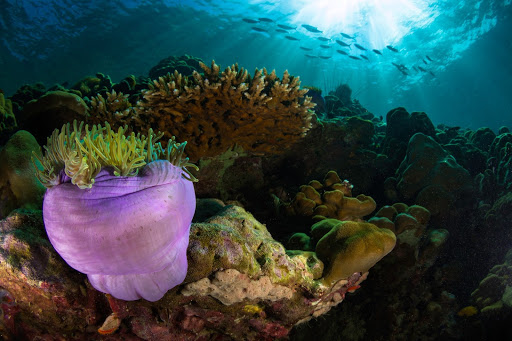The idea behind carbon credits is straightforward enough: if you need to emit carbon, you can ask someone else to reduce their emissions and pay them for their resulting credit. Or, if you manage to reduce your emissions, you can sell your extra credit. Either way, the same result: less carbon in the atmosphere. Whoever has the carbon credit is allowed to emit one ton of carbon or its equivalent, or to trade that option to others. And while trading for carbon credits is not as good as achieving actual emissions reductions, it can be helpful en route to net zero.
Projects earning carbon credits must live up to particular standards and be reviewed by a verification body and a regulatory agency before the appropriate standards organization will issue the credit. There are a variety of projects that would qualify for credit by either avoiding, reducing, or removing emissions. Some of these come in the form of nature-based solutions, which the Nature Conservancy says “maximize the carbon storage potential of our natural ecosystems.”
We have such an inclination to focus on the solutions possible by land, however, that we sometimes forget what can be done by sea: marine-based efforts can remove emissions by storing blue carbon. As Enric Sala, explorer-in-residence for National Geographic, told Yale Environment 360, “the ocean has long been seen as a victim of climate change, but it’s also a big part of the solution.”
Under the sea lies a plethora of opportunities not just for mitigating emissions, but also for protecting coastal and marine ecosystems teeming with biodiverse life, including mangroves, seagrasses, and salt marshes. According to the Blue Carbon Initiative, while such habitats do not even cover a full two percent of the ocean, about 50 percent of carbon sequestered in ocean sediments can be found there. The International Partnership for Blue Carbon adds that these ecosystems capture two to four times more carbon than traditional forests. When protected or restored, then, they can keep a lot of blue carbon trapped beneath the ocean’s surface.
A 2019 High-Level Panel for a Sustainable Ocean Economy report notes that such efforts “could reduce global greenhouse gas (GHG) emissions by nearly four billion tonnes of carbon dioxide equivalent (CO2e) per annum in 2030 and by more than 11 billion tonnes per annum in 2050.” However, these ecosystems release that carbon when damaged or destroyed, currently at a rate of about 450 million tons per year; this is particularly disturbing since historical global coverage of mangrove forests and tidal marshes has already been halved, while seagrass meadows have lost 30 percent.
The most attention has been placed on mangrove forests, tropical trees along the saltwater coasts of 118 countries. “Over 40 birds, 10 reptiles, one amphibian, and six mammal species” can be found only in mangrove habitats. Plus, they present an undeniable opportunity for staving off a quickly shifting climate if protected: the Blue Carbon Initiative adds that carbon released from mangrove deforestation constitutes about 10 percent of that from global deforestation, although these habitats equate to “just 0.7 percent of land coverage.” Fortunately, mangrove projects are becoming more frequent: “all of a sudden, in the last year really, we’ve gone from these very small, very few projects to a real scaling up,” Steve Crooks of Silvestrum Climate Associates told Yale Environment 360, adding that a project he is involved within the Indus Delta will reforest over 200,000 acres, absorb two million tons of carbon annually, and equate to one million blue carbon credits.
Another ecosystem ripe with opportunity, seagrass meadows, consists of flowering plants that thrive in the shallow waters of 159 countries. One acre of seagrass can be home to more than 40,000 fish and 50 million small invertebrates. And although covering less than 0.1 percent of the ocean floor, they trap about 18 percent of the carbon stored in the ocean annually, according to a UN Environment Programme report. Recently, one seagrass project off the coast of Virginia, maintained by the Virginia Institute of Marine Science and the Nature Conservancy, became the first to apply for carbon credit certification through the standards organization Verra. The project has already restored 3,600 hectares of the ecosystem, giving new life to eelgrass and absorbing half a metric ton of carbon per hectare annually.
Protecting these habitats is beneficial for our society in other ways, too. Besides securing better water quality and more schools of fish, these habitats offer coastal protection from extreme weather patterns, reducing flood damage by 29 percent, according to research by the Nature Conservancy. With 40 percent of the humans living within 100 kilometers of the coast and more than a thousand low-lying atoll islands at risk of becoming uninhabitable by mid-century, these ecosystems need protection and restoration more than ever.
Despite presenting an unfathomable opportunity, we are not yet taking full advantage of carbon credits or nature-based solutions. But the tides are turning. The Taskforce on Scaling Voluntary Carbon Markets estimates that demand for all types of carbon credits could increase by a factor of 15 by 2030 and by a factor of 100 by 2050. And for blue carbon, in particular, the future seems bright: with companies in the shipping and tourism industries and corporations like Apple entering the playing field, Amy Schmid, manager of natural climate solutions development at Verra, says “there’s a lot of demand for blue carbon credits.”





